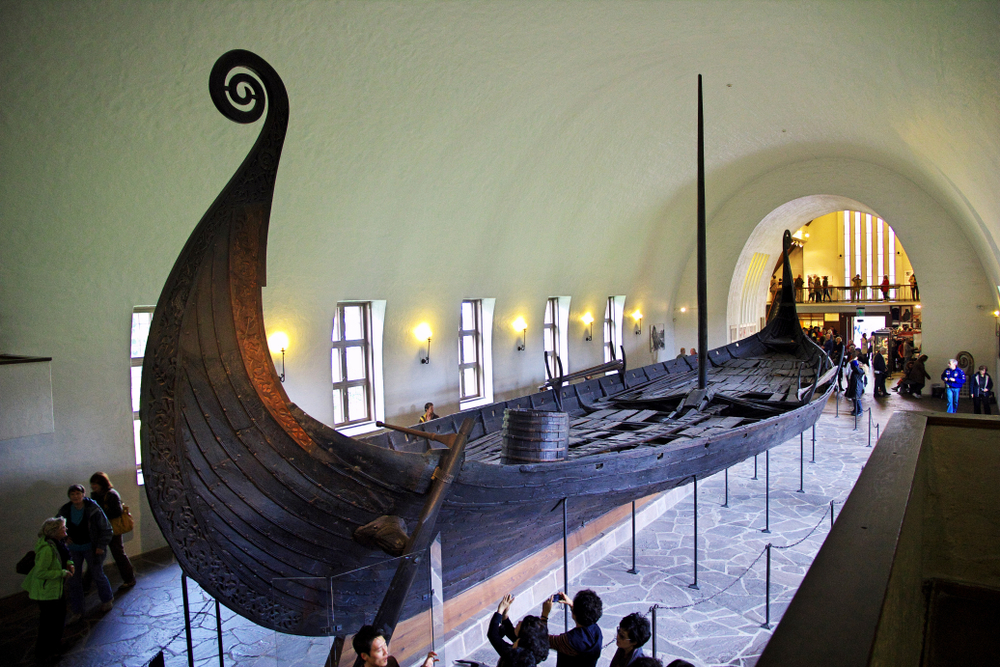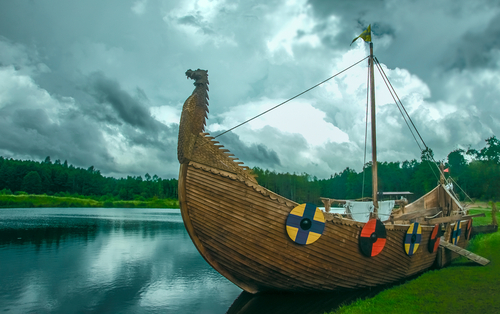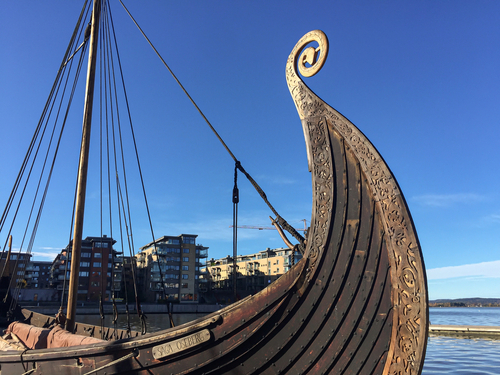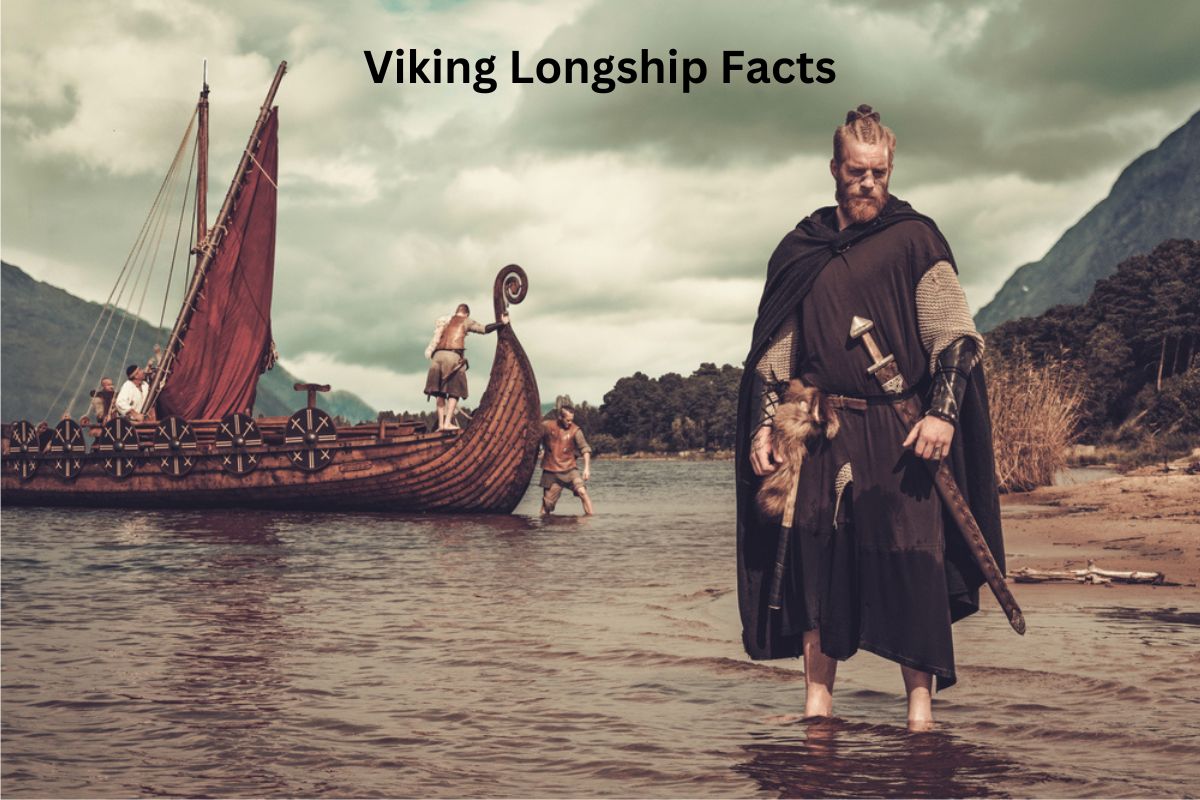Viking longships, often regarded as one of the most iconic symbols of the Viking Age, were a crucial element of Viking culture and seafaring prowess.
These remarkable vessels, known for their distinctive design, played a central role in shaping the history of the Vikings and their impact on Europe and beyond.
From their construction techniques to their diverse uses in exploration, trade, and warfare, Viking longships were marvels of their time.
In this exploration, we delve into the fascinating world of Viking longships, uncovering their unique features, cultural significance, and historical legacy. These remarkable vessels not only defined an era but also left an enduring mark on the course of maritime history.
Facts About Viking Longships
1. Long, slender design
Viking longships were characterized by their distinctive long and slender design. These ships were elongated, with a length-to-width ratio that made them well-suited for both river navigation and open sea voyages.
Also Read: Facts About the Vikings
The long and narrow shape allowed them to cut through the water efficiently, making them swift and agile vessels.

2. Made from oak and clinker-built
Viking longships were primarily constructed from oak wood. Oak was chosen for its durability and strength, which was crucial for the ship’s ability to withstand the rigors of sea travel and potential clashes with other ships or coastal defenses.
Also Read: Timeline of the Vikings in England
These ships were constructed using a clinker-built method, which involved overlapping wooden planks on the hull. This design added to the ship’s strength and flexibility.
3. Varied in size
Viking longships came in a range of sizes to suit different purposes. The smallest longships were compact and agile, often used for quick raids or reconnaissance missions. These small vessels could typically carry a dozen or so warriors.
On the other hand, larger longships were more substantial, with the capacity to accommodate up to 100 crew members, including warriors, rowers, and other personnel. The size of a longship was determined by its intended use, whether for raiding, trading, exploration, or transport.
4. Known for speed and maneuverability
Viking longships were celebrated for their exceptional speed and maneuverability. These qualities were crucial for the Vikings’ success in various endeavors, such as raids, exploration, and warfare.
The longships’ streamlined design and shallow draft allowed them to navigate through narrow rivers and shallow coastal waters with ease.
This versatility meant that the Vikings could quickly reach their targets, escape pursuit, and effectively conduct surprise attacks on coastal settlements and other vessels.

5. Often adorned with dragon or serpent heads
Many Viking longships were adorned with intricately carved dragon or serpent heads at the bow. These decorative features were not merely ornamental but held both practical and symbolic significance.
The dragon heads were believed to have served as figureheads that could intimidate enemies and protect the ship and its crew from malevolent spirits and sea monsters.
They also added to the fearsome appearance of the longships, contributing to the Vikings’ psychological warfare tactics during raids.
6. Equipped with oars and sails
Viking longships were versatile vessels equipped with both oars and sails. This dual propulsion system provided the crew with greater control over the ship’s movements and allowed them to adapt to varying wind and weather conditions.
The oars, typically operated by rowers arranged in pairs along the sides of the ship, offered the advantage of precise navigation and the ability to move against the wind or in calm waters.
When favorable winds were available, the sails were raised, enabling the longship to harness the power of the wind for greater speed.
This combination of oars and sails made Viking longships highly adaptable and efficient in different maritime situations.
7. Used for raiding, trade, and exploration
Viking longships served a variety of purposes, reflecting the versatility of Viking seafaring culture. They were not just instruments of war but also played vital roles in trade and exploration.
The Vikings used longships for raids on coastal settlements and monasteries, which were a significant source of wealth during the Viking Age.
These swift vessels allowed them to approach quickly, strike, and then escape before larger forces could respond. Longships were also used for trading expeditions, enabling the Vikings to establish trade routes throughout Europe, Asia, and even as far as North America.
Additionally, longships were employed in exploration, aiding the Vikings in discovering and settling in new lands such as Iceland, Greenland, and Vinland (North America).

8. Crew included warriors, rowers, and helmsman
The crew of a Viking longship had a diverse composition. It typically included warriors, rowers, and a helmsman. Warriors were essential for the ship’s defense during raids and could also serve as traders or explorers on different voyages.
The rowers, who were often arranged in pairs along the sides of the ship, provided the power for propulsion through the use of oars. Their synchronized rowing was crucial for the longship’s speed and maneuverability.
The helmsman, responsible for steering the ship, played a vital role in navigating through treacherous waters and ensuring the crew’s safety.
9. Rely on natural navigation methods
Unlike modern navigation, which relies on advanced instruments and satellite technology, the Vikings relied on natural navigation methods.
They had a deep understanding of celestial navigation, using the position of the stars, sun, and landmarks to determine their course and location.
They also paid close attention to natural phenomena like the behavior of birds, the color of water, and the patterns of waves. This knowledge allowed them to navigate the vast and often unpredictable waters of the North Atlantic, the North Sea, and other regions they explored.
10. Played a role in the Viking Age’s end
The Viking Age gradually came to an end around the 11th century, marking a shift in Scandinavian maritime traditions. Several factors contributed to this transition, including changes in shipbuilding technology.
While the clinker-built longships were highly effective for their time, they were eventually replaced by larger, carvel-built vessels with more advanced features.
Additionally, political and societal changes, such as the conversion to Christianity and the centralization of power, influenced Viking society and its seafaring activities.
As a result, the era of Viking longships came to a close, but their legacy continues to capture the imagination and remains a significant part of Viking history.
